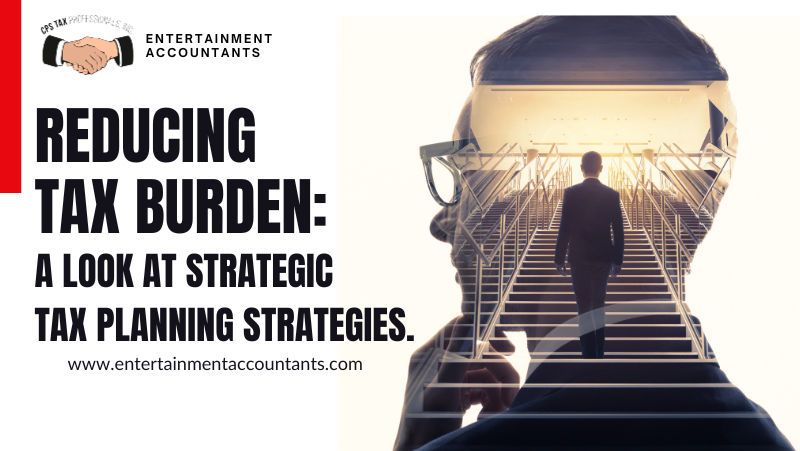As individuals and businesses navigate the complex terrain of taxation, the quest to minimize the tax burden becomes a strategic imperative. Strategic tax planning is not just about compliance; it’s about identifying opportunities, leveraging incentives, and adopting a proactive approach to financial management. In this blog post, we’ll delve into the realm of reducing the tax burden, exploring strategic tax planning strategies that individuals and businesses can implement to optimize their financial position.
Understanding the Tax Landscape:
Before delving into specific strategies, it’s crucial to grasp the dynamics of the tax landscape. Tax laws are multifaceted and subject to change, making it essential for individuals and businesses alike to stay informed about the latest regulations. A solid understanding of the tax environment sets the foundation for effective strategic tax planning.
1. Utilizing Tax Credits and Deductions:
One of the fundamental pillars of strategic tax planning involves identifying and maximizing the use of available tax credits and deductions. Tax credits, such as those for education expenses or renewable energy investments, directly reduce the amount of taxes owed. Deductions, on the other hand, lower taxable income. Savvy tax planning involves a meticulous review of all available credits and deductions to ensure that none are overlooked.
2. Leveraging Retirement Accounts:
Contributions to retirement accounts offer a dual benefit—saving for the future and reducing current taxable income. Whether it’s a 401(k), Individual Retirement Account (IRA), or other retirement savings vehicle, contributing to these accounts can have a significant impact on an individual’s tax liability. Strategic planning involves optimizing contributions based on current income levels and retirement goals.
3. Exploring Tax-Efficient Investments:
Investment decisions can have profound tax implications. Strategic tax planning involves selecting investments with an eye on tax efficiency. For example, long-term capital gains are typically taxed at a lower rate than short-term gains. Diversifying investments and adopting tax-efficient strategies within investment portfolios can help minimize the tax impact on investment returns.
4. Timing Matters:
The timing of income and expenses can play a crucial role in tax planning. For individuals, this might involve strategically timing the sale of assets to minimize capital gains taxes. For businesses, it could mean deferring income or accelerating deductible expenses. Being mindful of the timing of financial transactions is a strategic approach to optimizing tax outcomes.
5. Small Business Strategies:
For entrepreneurs and small business owners, there are specific tax planning strategies to explore. These may include taking advantage of Section 179 deductions for equipment purchases, maximizing Qualified Business Income (QBI) deductions, and exploring tax credits for research and development activities. Tailoring tax planning to the unique needs of a small business is essential for optimizing tax outcomes.
6. Charitable Giving:
Charitable contributions not only benefit worthy causes but also offer potential tax advantages. Strategic tax planning involves optimizing charitable giving by exploring options such as donor-advised funds, charitable remainder trusts, or gifting appreciated assets. Understanding the tax implications of charitable contributions ensures that individuals can support causes they care about while minimizing their tax liability.
7. Estate Planning:
Estate taxes can be a significant concern for individuals with substantial assets. Strategic tax planning in the realm of estate planning involves measures such as setting up trusts, gifting strategies, and leveraging exemptions to minimize the tax impact on the transfer of wealth to heirs. Proactive estate planning ensures that assets are transferred in a tax-efficient manner.
8. Stay Informed and Seek Professional Guidance:
The tax landscape is ever-evolving, with changes in legislation and regulations. Staying informed about these changes is crucial for effective tax planning. Additionally, seeking the guidance of tax professionals ensures that individuals and businesses can navigate the complexities of the tax code, leverage the latest opportunities, and stay compliant with current regulations.
Conclusion: Empowering Financial Futures through Strategic Tax Planning:
Reducing the tax burden is not just a financial strategy; it’s a comprehensive approach to empowering individuals and businesses to make the most of their financial resources. By embracing strategic tax planning, one can optimize tax outcomes, preserve wealth, and achieve long-term financial goals. As we navigate the intricate world of taxation, strategic planning emerges as a powerful tool for not just complying with the tax code but strategically navigating it to unlock financial potential.

